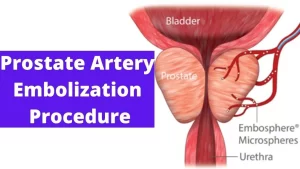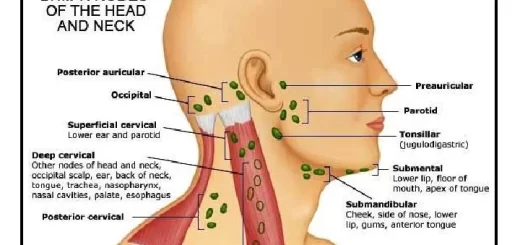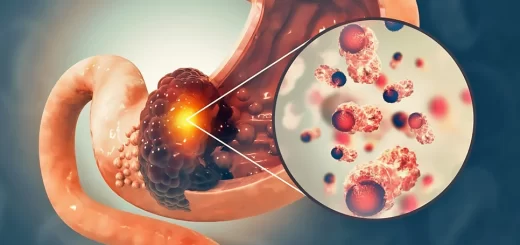Enlarged prostate symptoms, Prostatic artery embolization (PAE) importance and risks
Prostate artery embolization is a new outpatient procedure, X-ray technology is used to treat an enlarged prostate. where the prostate size is reduced by blocking its arterial blood supply (embolization), Prostate Artery Embolization is an ambulatory procedure which means that most patients go home and do not have to spend a night at the hospital, and the procedure recovery is fast.
What is an enlarged prostate?
The prostate gland is part of the male reproductive system, It is located at the base of the urinary bladder and surrounding the urethra, It is responsible for the production of seminal fluid, Many older men experience growth in their prostate as they age, leading to the benign prostatic hypertrophy (BPH) or the enlarged prostate gland. When the gland enlarges, it constricts the urethra and puts pressure on the bladder, and obstructs the urine flow.
Benign Prostate Hypertrophy (BPH) refers to the enlarged prostate gland and it is the most common cause of Lower Urinary Track Symptoms (LUTS) in older males. benign prostatic hypertrophy can cause sudden and strong urges to urinate and, in severe cases, urinary tract infections (UTIs), damage to the kidney and bladder, and bladder stones.
Mild symptoms from BPH might require just some lifestyle changes such as avoiding drinking fluids after certain hours, and avoiding ingesting products with a diuretic effect like caffeine or alcohol, Patients who have BPH suffer from the following symptoms:
- Difficulty starting the urination process.
- Frequent and urgent need to urinate, especially problematic at night.
- The hesitant, interrupted, or weak stream of urine or a stream of urine that stops and starts.
- Increased nocturnal urination (which impacts sleep).
- Inability to empty the bladder fully.
- Leaking or dribbling of urine, as the bladder remains overfilled attempting to empty.
- Complete inability to urinate.
- Repeated or non-resolving UTIs (urinary tract infections), as contaminated urine remains retained in the bladder.
- Blood in the urine.
Transurethral resection of the prostate (TURP) is a common type of prostate surgery, The doctor inserts a resectoscope (a tool that consists of a wide-angle microscope for exploration and a wire loop that can cauterize and remove tissue into the tip of the penis and through the urethra, Using that tool, the doctor trims away excess prostate tissue, thereby restoring proper urine flow.
Though TURP is considered a minimally invasive procedure, it is still a form of surgery, which brings with it some downsides, including Temporary difficulty with urination, Dry orgasms, Erectile dysfunction (ED), UTIs, Heavy post-operative bleeding, Low blood sodium levels, Urinary incontinence, so, PAE is a safe alternative to TURP.
The best candidates for PAE are men who: Suffer from the most common symptoms related to an enlarged prostate, Have tried drug therapy but did not benefit from it, Have a prostate size over 40 grams, and can’t have general anesthesia.
Prostatic artery embolization (PAE)
It is a minimally invasive treatment that helps improve lower urinary tract symptoms caused by Benign Prostatic Hyperplasia (BPH), Benign Prostatic Hyperplasia is the most common benign tumor found in men, and it is a noncancerous enlargement of the prostate gland. The PAE procedure is performed by the interventional radiologist (IR), a doctor who uses X-rays and other advanced imaging to see inside the body and treat conditions without surgery.
PAE symptoms related to Benign Prostatic Hyperplasia are present in about one in four men by age 55, and in half of the 75-year-old men, The procedure of prostatic artery embolization has a lower risk of urinary incontinence and sexual side effects (retrograde ejaculation or erectile dysfunction), when compared with more invasive surgical procedures such as the Transurethral Resection of the Prostate (TURP).
What happens during Prostatic Artery Embolization?
The interventional radiologist uses X-rays and other imaging techniques to see inside the body and treat conditions without surgery, The Foley catheter (a thin, hollow tube held in place with a balloon at the end) can be inserted into your urethra and positioned in your bladder to provide a reference point for the surrounding anatomy.
Prostatic Artery Embolization is performed through a small catheter inserted into the artery in your wrist or groin, The interventional radiologist guides the catheter into the vessels that supply blood to the prostate.
The arteriogram (an X-ray in which dye is injected into the blood vessels) is done to map the blood vessels feeding your prostate, Tiny round microspheres (particles) are injected through the catheter and into the blood vessels that feed your prostate to reduce its blood supply.
The interventional radiologist will move the catheter to treat the other side of your prostate, repeating the steps above. So, the prostate will begin to shrink, relieving and improving symptoms usually within days of the procedure. Prostate Artery Embolization is a new treatment to relieve the obstructions from enlarged prostate glands. PAE has long-term success in treating an enlarged prostate.
Benefits of Prostate Artery Embolization
PAE procedure is a non-invasive, outpatient procedure, Patients can expect to see results within a few days, Recovery time is lower, Less risk of urinary incontinence, Less risk of sexual side effects, Less pain/discomfort during and after the procedure, rest, in addition to maintaining or improving sexual function in up to half of the patients, fertility preservation is presumed through the absence of retrograde ejaculation.
PAE procedure is performed under local anaesthetic with minimal intraprocedural/postprocedural discomfort, urethral catheterization is either not required or only for a short duration during/after the procedure, and subsequent return to normal activities and work is rapid.
From a surgical perspective, the PAE procedure is versatile with only a few exclusion criteria, PAE works well for patients in whom other surgical options are not ideal or are potentially excluded, and PAE is more likely to benefit those with large prostates or large median lobes, Due to its low complication rate, attempting PAE before considering surgery is a possible treatment strategy.
Risks of Prostatic Artery Embolization
Patients may suffer from “post-PAE syndrome” for days following the procedure, which can include nausea, vomiting, fever, pelvic pain, or painful or frequent urination, there are other risks such as hematoma at the incision site; blood in the urine, semen, or stool; bladder spasm; or infection of the puncture site or prostate.
Renal function is not usually a major consideration for surgery, It can be an excluding factor for PAE due to contrast requirements during the procedure, patients with other surgical indications such as bladder calculi, diverticula or previous pelvic radiotherapy are also unsuitable for PAE, The technique does not allow tissue sampling and atherosclerotic or tortuous prostatic vessels can present obstacles during PAE.
Prostatic Artery Embolization involves ionizing radiation whereas standard surgical therapies do not; the dose area product per procedure is around 17,400 μGy/m2, or an effective dose of approximately 47 mSv, This is roughly equivalent to an additional lifetime cancer risk of 0.2% (baseline risk for men is 44.9%) in a patient population with an average age of 65.
The results with PAE appear variable and operator-dependent, although concerted educational mentored programs from organizations such as the Cardiovascular and Interventional Society of Europe are attempting to improve the reproducibility of PAE.
You can download Science online application on Google Play from this link: Science online Apps on Google Play
Common procedures of Interventional Radiology and the best Interventional Radiologists
Interventional radiology types, Robotic endovascular systems advantages & disadvantages
Cone beam CT vs. Fan beam CT, CBCT advantages, disadvantages & uses
Artificial intelligence in radiology decision support systems, Medical Imaging & Healthcare
Prostate function, structure, lobes, Benign enlargement of prostate & malignant prostatic tumor
Hepatic Artery Embolization, Importance & risks of Embolization therapy for Liver cancer
Thyroid nodules, Thyroid Fine Needle Aspiration Biopsy importance & risks
Uterine fibroid embolization risks, importance & Minimally invasive procedure specialists




